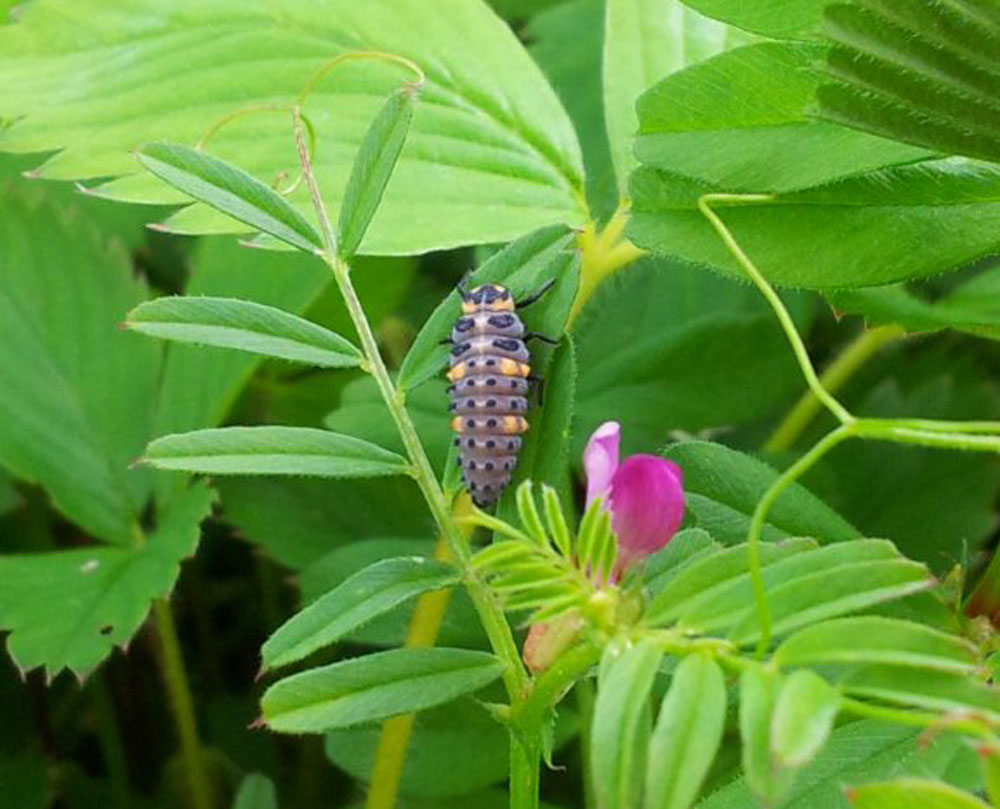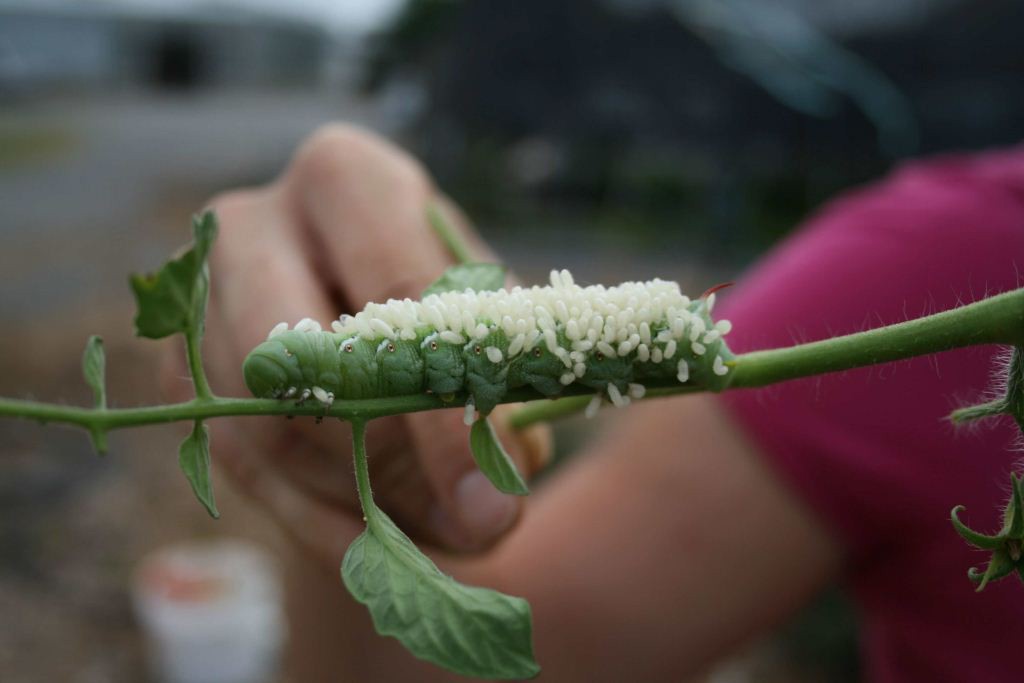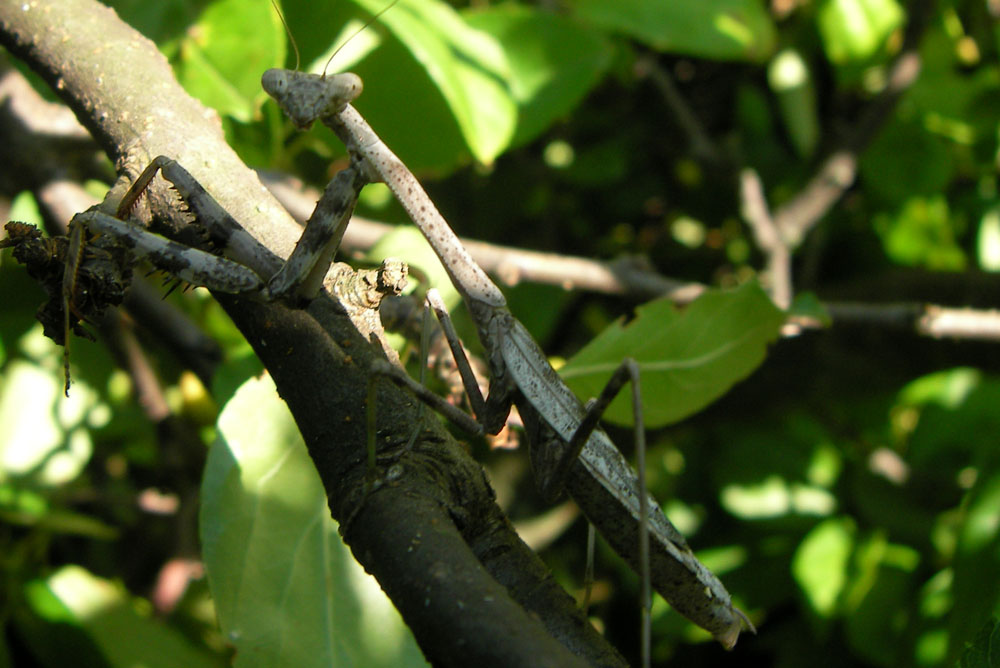Good Bugs in Your Garden

You may not recognize this ladybug larvae, soon to join forces with you in your war against harmful garden pests.
Is the term “good bug” an oxymoron? Mosquitoes bite. Ants invade. Wasps sting. Termites demolish. What’s good about that? You may think of bugs as the enemy in nature’s narrative, the evildoers that some of us love to hate. It seems they’re always, well, bugging us. But not all bugs are bad. According to the Smithsonian, insects account for 80 percent of life on earth and yet only 1 percent of the bugs we come across are actually harmful (Dr. Girish Chandra, ex Professor, Delhi University). Many insects are good bugs that we call beneficials: our living allies for pest control in the garden. Think of the pollinators, who make our food production possible. The predators that consume other harmful insects or the parasites that kill or weaken their vermin victims. The insects that aid in decay by breaking down dead plants and animals and enriching the soil with organic matter. These are our heroes. The guys in the white hats.
Conservatory Horticulturist Chelsea Mahaffey recently created a presentation for the Richmond Horticulture Association titled Good Bugs, Bad Bugs: Creating a Perfect Harmony. She recommends “Attracting Beneficial Bugs to Your by Garden” by Jessica Walliser, which you can find in the Garden Shop at Lewis Ginter Botanical Garden if you want to know more. It’s full of information to help you get to know some of your natural accomplices and how they operate:
Parasitic wasps lay their eggs on the bodies of other live insects. The newly hatched larvae then devour their unwitting hosts. These ill-mannered guests are known to parasitize over 200 species of pests, including aphids, beetles, flies, scale and caterpillars. They are a must-have in your garden.

The tiny white eggs of a parasitic wasp have been laid on this host hornworm, who will become their first meal when they hatch.
As cute as they look, adult ladybugs and their larvae are voracious predators. And they’re not picky eaters; they’re generalists, seemingly consuming anything in their path. A single ladybug can devour up to 5,000 aphids in its short lifetime.
Green lacewings are another generalist predator who happily consumes the small caterpillars, mealybugs, and insect larvae that plague your garden. Lacewing feed by puncturing their prey and injecting a paralyzing fluid which liquefies its internal organs into food.
Both beautiful and beneficial, the dragonfly is carnivorous, feeding on mosquito larvae and adults as well as other flying and aquatic creatures. Because they spend the early part of their lives in the water themselves, dragonflies need an unpolluted pond or fountain for hospitable habitat.
Masters of disguise, praying mantis are ambush predators whose camouflage enables them to strike at unwitting prey who wander within their reach. Praying mantis are carnivores whose primary diet consists of arthropods like mites, spiders and even small frogs and lizards.
Bees, butterflies, beetles, flies, ants and other pollinators help fertilize flowering plants by moving pollen to the stigma as they rummage for nectar. Missouri Botanical Garden credits these essential pollinators for the reproduction of nearly 90 percent of all flowering plants.
And as hard as it might be to appreciate them, ants, flies and maggots are some of the beneficials in your garden that help convert dead plants and animals into organic matter. Added to soil, organic matter helps plants absorb nutrients, helps prevent soil compaction and improves moisture absorption and drainage.
At Lewis Ginter Botanical Garden we deploy predatory insects in the closed ecosystem of the Conservatory as well as in the Community Kitchen Garden as part of our integrated pest management strategy. Let’s look at a few tips on how to get these garden guardians to work in your garden.
Treat your winged warriors and crawling conquerors as you would any other valued guests:
1. Get to know them. The Hort Helpline at Lewis Ginter Botanical Garden is a ready resource for help identifying garden insects (or answering any of your gardening questions). Call 262-9887, x332, or email [email protected]. In the Garden’s Lora Robins Library you will find books devoted to insects. (The Virginia Cooperative Extension branch in your locality can help you identify insect damage and diseased plants. Please don’t bring insects or diseased plant material to the Garden for identification).
2. Provide creature comforts. Supply a diversity of food sources (nectar plants are best), sufficient water and a hospitable environment (leaf litter and plant debris) where bugs can hide and reproduce
3. Everything in moderation. Limit the use of pesticides (which will harm not only the pest you are trying to eradicate but beneficial insects as well). Instead, try hand picking pests in the early morning when they are most active or flushing them off with a spray from the garden hose.
4. Practice tolerance. Learn to accept some pest and plant damage by thinking of it as a food source which will help attract beneficials.
5. Only the strong survive. Maintain healthy plants as a preventative by choosing species well suited to conditions in your area and then providing what they need to thrive.
